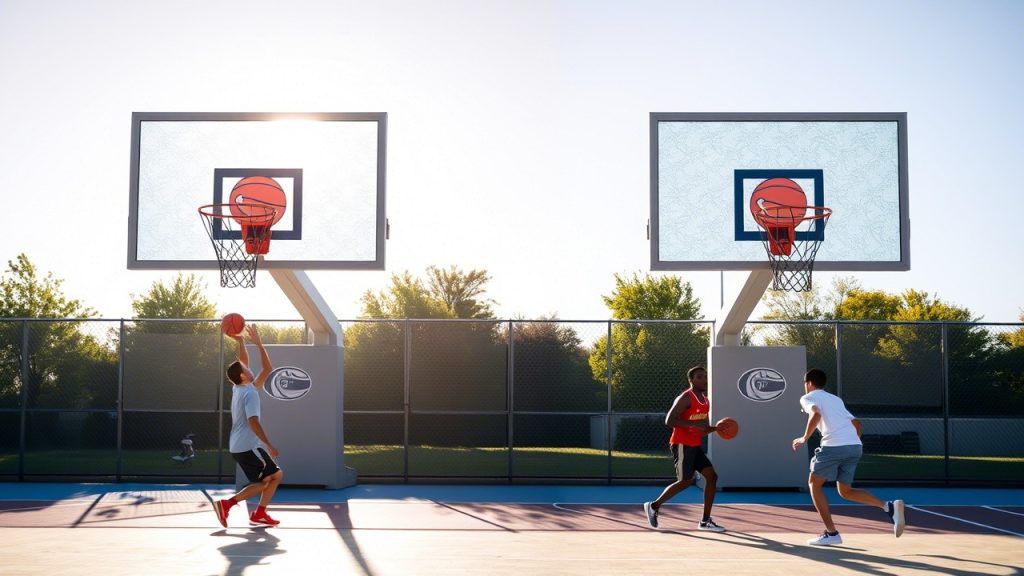When it comes to playing basketball, one of the most essential factors for an enjoyable and safe experience is the height of the basketball hoop. The right hoop height can significantly influence a player’s ability to make shots, practice effectively, and develop their skills. Whether you’re a child just starting to learn the game, a teenager looking to improve, or an adult aiming for serious practice, adjusting the basketball hoop to the appropriate height is crucial for a positive playing experience.
We’ll provide a basketball hoop height adjustment chart that covers all age groups, from young children to adult players. Understanding the correct height for different age groups ensures that everyone can have fun and improve at their own pace. We’ll also address some frequently asked questions to help you get the most out of your hoop, regardless of age or skill level.
Looking for the perfect fit? Check Out These Best-Selling Basketball Hoop Height Adjustment.

Why Is the Right Basketball Hoop Height Important?
The height of the basketball hoop plays a crucial role in making the game enjoyable and challenging at every stage of development. Here’s why the right hoop height matters:
- Skill Development: For beginners, especially children, having a hoop set at the right height allows them to practice shooting and other fundamental skills without feeling frustrated. For more advanced players, setting the hoop at the regulation height helps them improve their accuracy, strength, and technique.
- Safety: Using a hoop set too high or too low can increase the risk of injury, especially when players are trying to shoot or dunk. Ensuring the hoop is adjusted to the correct height helps keep players safe from falls, overexertion, and other injuries.
- Fun Factor: When the hoop is at the appropriate height, players are more likely to make successful shots, which keeps the game enjoyable. This can motivate younger players to keep practicing and develop their skills.
- Inclusive Play: Adjusting the height of the basketball hoop based on the age group ensures that people of all skill levels, from kids to adults, can enjoy the game and participate in a fair and fun manner.
Looking for the perfect fit? Check out these Best-Selling Basketball Hoop.
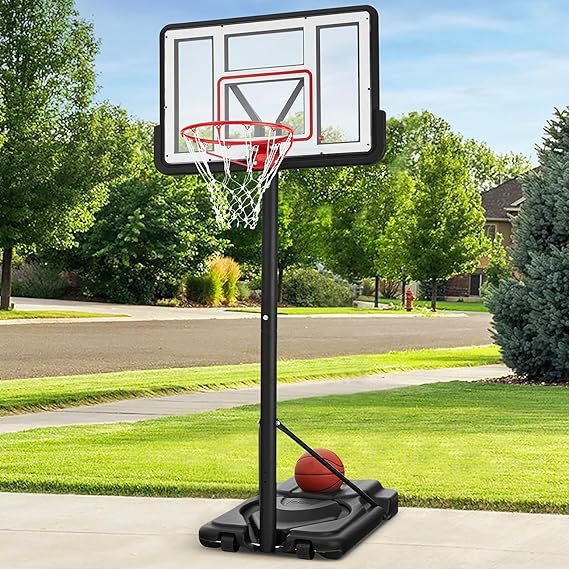
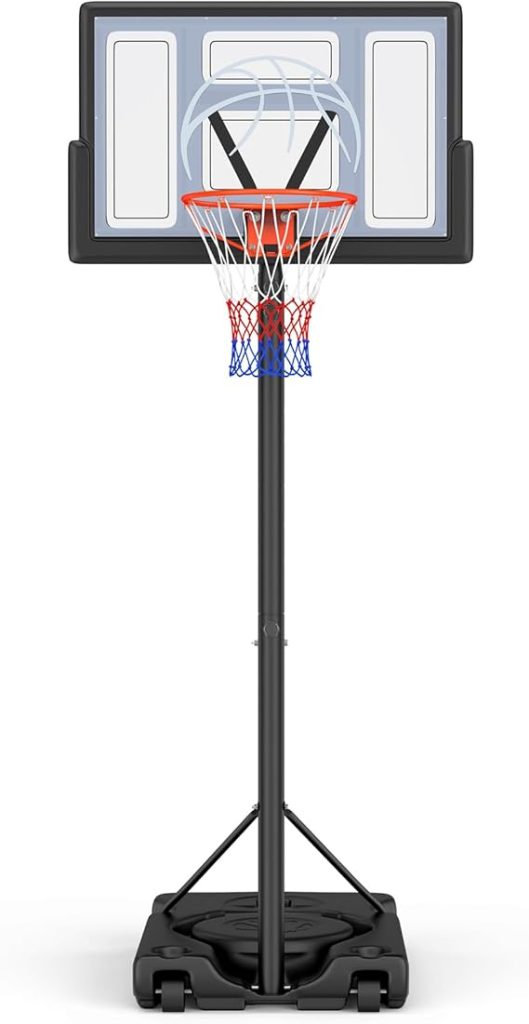
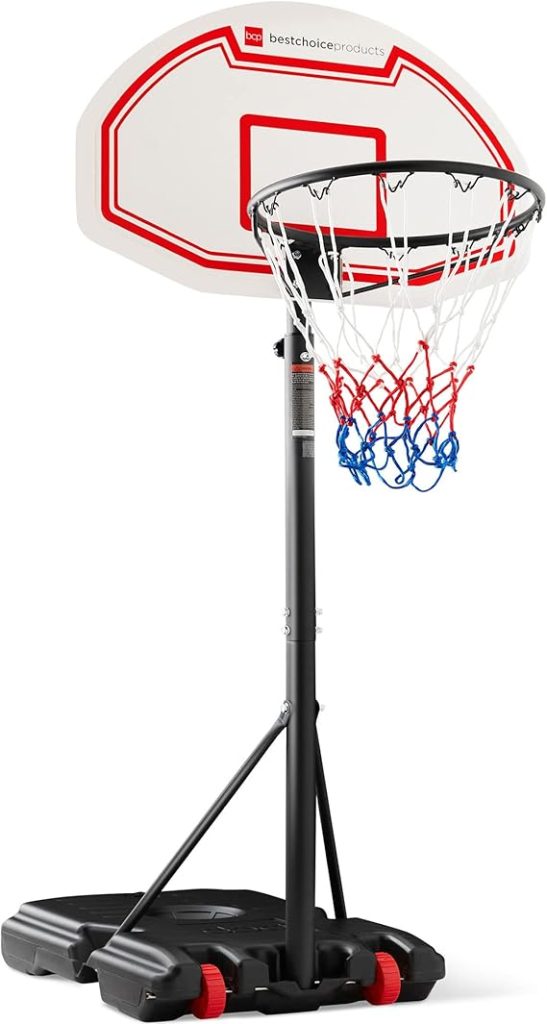
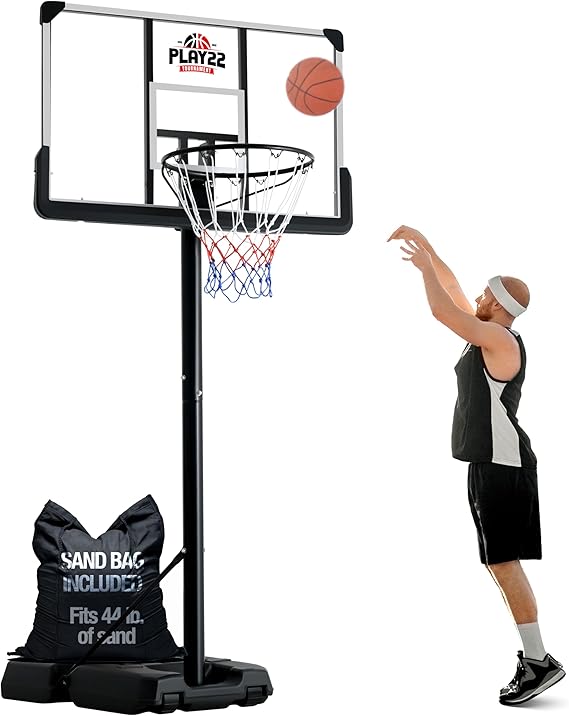
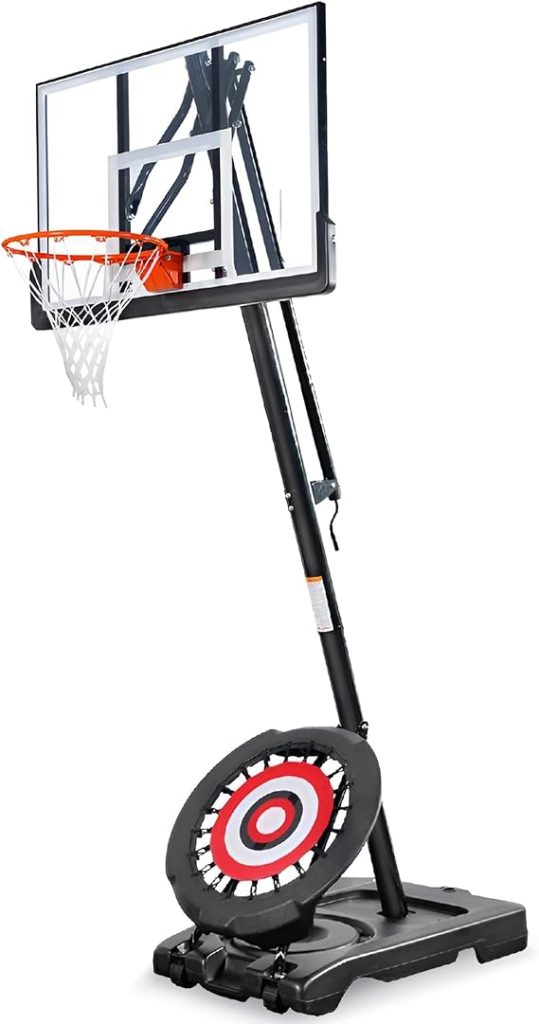
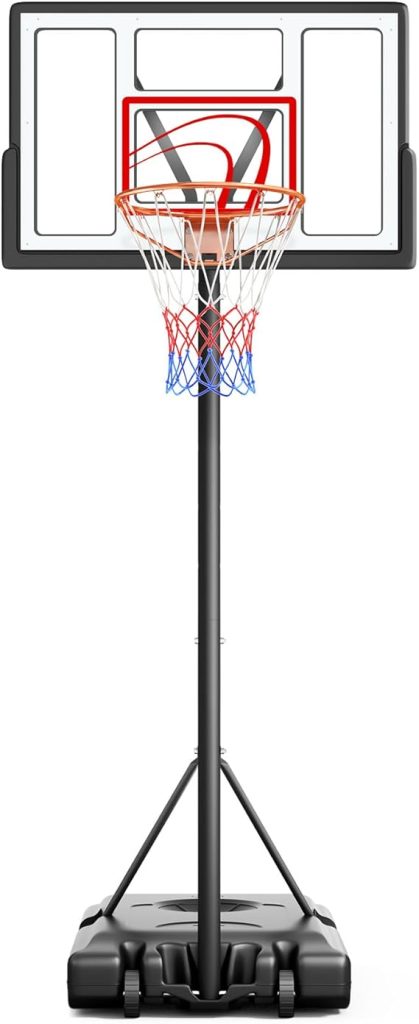
The Basketball Hoop Height Adjustment Chart for All Age Groups
Below is a basketball hoop height chart that shows the recommended hoop heights for players of different age groups. The guidelines below will help you set the hoop to the appropriate height, based on the player’s age, height, and skill level.
| Age Group | Recommended Hoop Height |
|---|---|
| 3-5 years (Beginners) | 6 to 7 feet |
| 6-8 years (Young Kids) | 7 to 8 feet |
| 9-11 years (Middle School) | 8 feet |
| 12-14 years (Pre-Teens) | 9 feet |
| 15-18 years (Teens) | 10 feet (Standard) |
| 18+ years (Adults) | 10 feet (Regulation)** |
| NBA / Professional | 10 feet (Regulation)** |
1. 3-5 Years (Beginners) – 6 to 7 Feet
For children in this age group, basketball is mostly about introducing them to the game and helping them develop basic motor skills like hand-eye coordination and footwork. At this stage, they aren’t concerned with shooting three-pointers or making free throws—they’re simply learning how to dribble, pass, and shoot.
- Why 6 to 7 feet?: A hoop height between 6 and 7 feet is low enough to make it easy for young children to make shots and feel successful. It encourages kids to keep practicing while building their confidence.
- Tips: Encourage them to focus on technique, such as aiming for the hoop and practicing their shooting form. Games at this height can be made fun by introducing basic basketball drills.
2. 6-8 Years (Young Kids) – 7 to 8 Feet
As children progress in age and skill, they’ll begin to develop a better understanding of the game. This age group is ready to start making more controlled shots and improving their dribbling and ball-handling skills.
- Why 7 to 8 feet?: A hoop height of 7 to 8 feet provides a challenge without being overwhelming. This height helps children focus on shooting form and gives them the confidence to take shots from different areas of the court.
- Tips: At this age, they should start learning basic offensive and defensive skills. Encourage them to practice layups, free throws, and shots from mid-range.
3. 9-11 Years (Middle School) – 8 Feet
Kids in the 9-11 age range are typically a bit taller and have gained some experience playing the game. They are ready to develop a more advanced understanding of shooting, passing, and defending.
- Why 8 feet?: A height of 8 feet is the perfect middle ground for this age group. It’s still low enough to allow for easy shooting but offers more of a challenge, which is important as they develop their skills.
- Tips: Focus on helping them refine their shooting technique, work on dribbling drills, and introduce basic offensive strategies. This is also a good time to introduce the concept of footwork and pivoting.
Read More: How to Measure a Basketball Hoop
4. 12-14 Years (Pre-Teens) – 9 Feet
As players get older, they’ll start to develop a greater understanding of basketball strategies and teamwork. At this age, they may be joining school teams or playing in organized leagues, so their skills will continue to improve.
- Why 9 feet?: A 9-foot hoop allows pre-teens to work on their shots and free throws while still building strength and technique. It’s high enough to create a challenge but not too high that it makes shooting difficult.
- Tips: At this stage, focus on developing their shooting consistency, especially from the free-throw line. Also, encourage them to work on both offense and defense, with a focus on agility and decision-making.
5. 15-18 Years (Teens) – 10 Feet (Standard)
At this stage, many teenagers are ready to play on a full-size hoop. They’ve developed enough strength and skill to shoot from a regulation height and are now able to practice and develop more advanced moves.
- Why 10 feet?: A 10-foot hoop is the standard height for all professional basketball courts, including high school, college, and the NBA. Practicing on a standard-height hoop helps players build the strength and accuracy they need to compete at higher levels.
- Tips: Teenagers should focus on refining their shooting form and technique, working on their footwork, and building basketball IQ. Encourage them to practice at various spots on the court, from the three-point line to the free-throw line.
6. 18+ Years (Adults) – 10 Feet (Regulation)
Adults who enjoy playing basketball or are looking to continue developing their skills should use a hoop at the standard regulation height of 10 feet.
- Why 10 feet?: This height is the official NBA regulation height, and it provides the perfect challenge for adult players. Shooting on a regulation-height hoop allows players to work on their strength, form, and shooting accuracy.
- Tips: For adults, the focus should be on advanced shooting techniques, game strategies, conditioning, and teamwork. Practice shooting from beyond the arc, work on ball handling, and focus on improving endurance.
7. NBA / Professional Basketball – 10 Feet (Regulation)
For professional basketball players, the hoop height remains at 10 feet, which is the official height for all professional and most competitive leagues. This is the same height used in high school, college, and professional NBA courts.
- Why 10 feet?: This is the regulation height for professional basketball and is used across all competitive levels. Players at this level are conditioned to shoot, jump, and dunk with power and precision on a 10-foot hoop.
- Tips: Advanced players should work on a variety of drills, including shooting drills, dribbling drills, defensive strategies, and overall conditioning.
Frequently Asked Questions
1. Can I adjust the height of my basketball hoop as my child grows?
- Yes! Many modern basketball hoops, especially adjustable-height hoops, allow you to change the height of the rim as your child grows. These hoops can be adjusted easily to accommodate different skill levels and ages.
2. What’s the best hoop height for beginners?
- For beginners, especially children between the ages of 3 and 5, it’s best to set the hoop at 6 to 7 feet. This allows them to develop basic skills and gain confidence while learning the fundamentals of the game.
3. How do I know when it’s time to adjust the hoop height?
- If a child or player consistently makes successful shots or seems to be struggling with the current height, it might be time to adjust the hoop. As players get older and more skilled, the hoop height should be gradually increased.
4. Why is 10 feet the standard hoop height?
- 10 feet is the standard height for professional basketball because it challenges players to develop strength and skill. This height is used in high school, college, and NBA courts, providing a consistent playing environment across various levels.
5. Can I practice dunking on a hoop set lower than 10 feet?
- Yes, practicing on a hoop set to a lower height (e.g., 9 feet or 8 feet) can help you practice dunking. However, for real game experience and muscle memory, it’s important to eventually practice on a regulation-height hoop.
6. What is the best way to adjust the height of a hoop?
- Many modern adjustable basketball hoops feature mechanisms like a crank, spring-assisted, or gas lift system that make it easy to adjust the hoop height. Some models allow for tool-free adjustments, making it a quick and simple process.
7. Can adults use a hoop set lower than 10 feet?
- While it’s possible for adults to play on a hoop set lower than 10 feet, it’s generally best to practice on a regulation-height hoop (10 feet) to ensure that players develop the strength and technique needed for full-court play.
Conclusion
Choosing the right basketball hoop height is essential for players of all ages and skill levels. By following the basketball hoop height adjustment chart outlined in this post, you can ensure that everyone, from young children to adults, can enjoy the game and continue to improve their skills. Whether you’re practicing for fun or aiming to compete at a higher level, adjusting the hoop height to suit your age group will help you get the most out of your basketball experience.
More Tools

